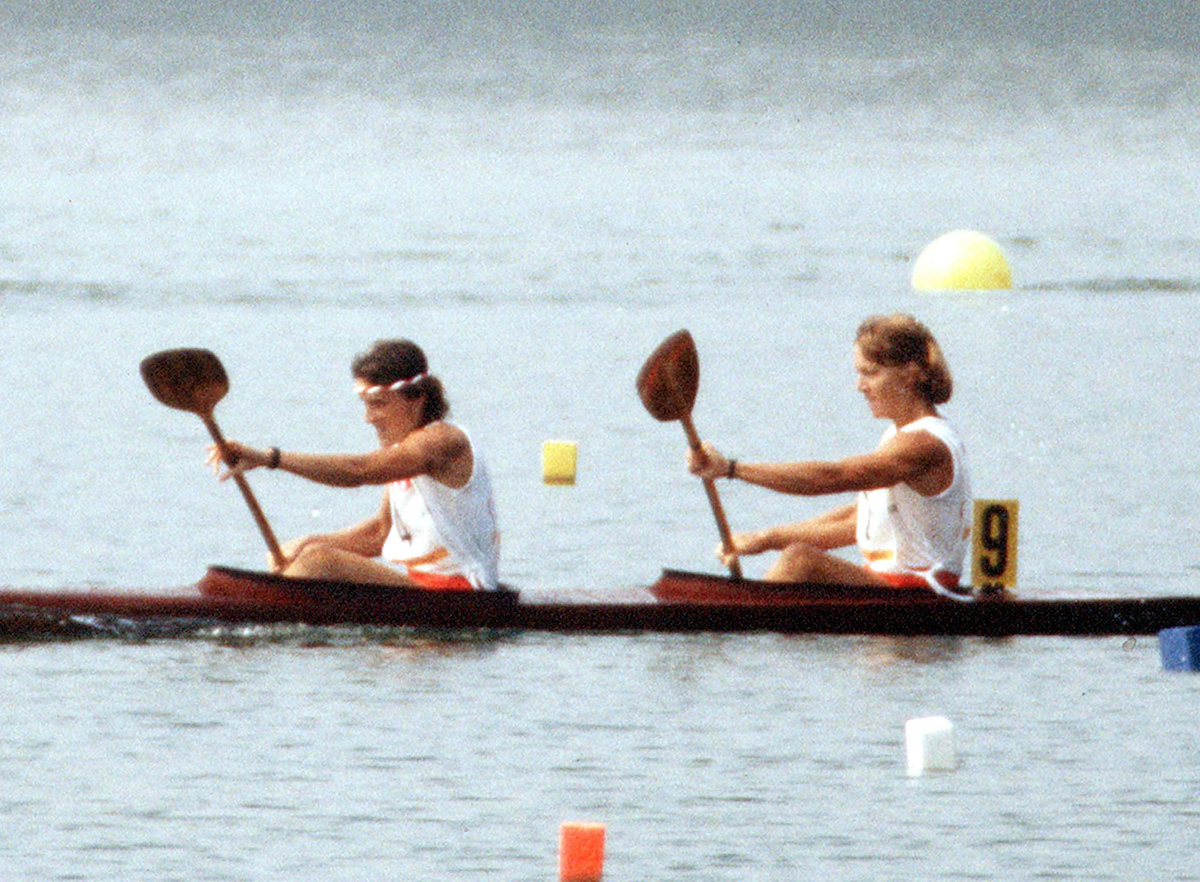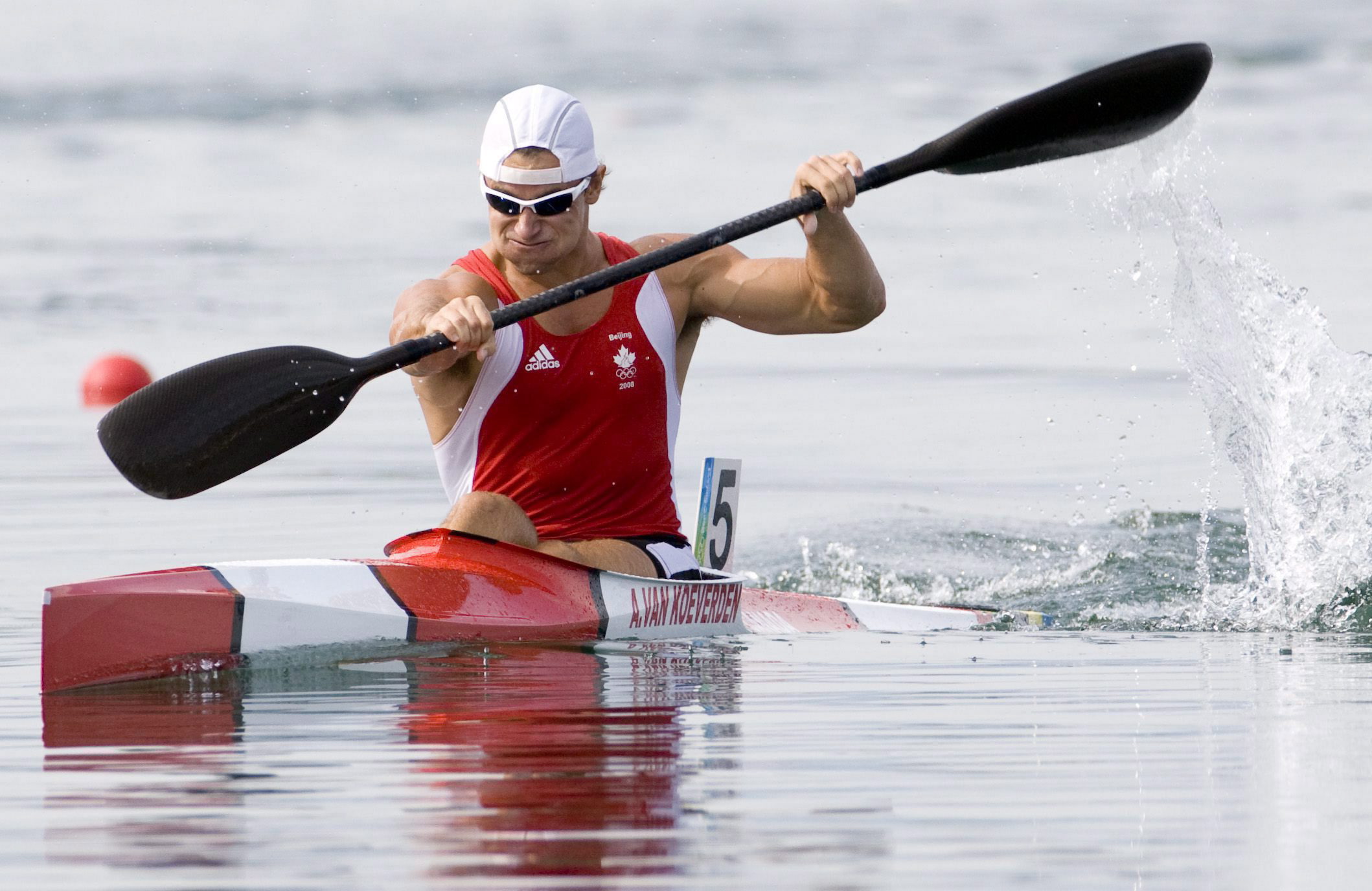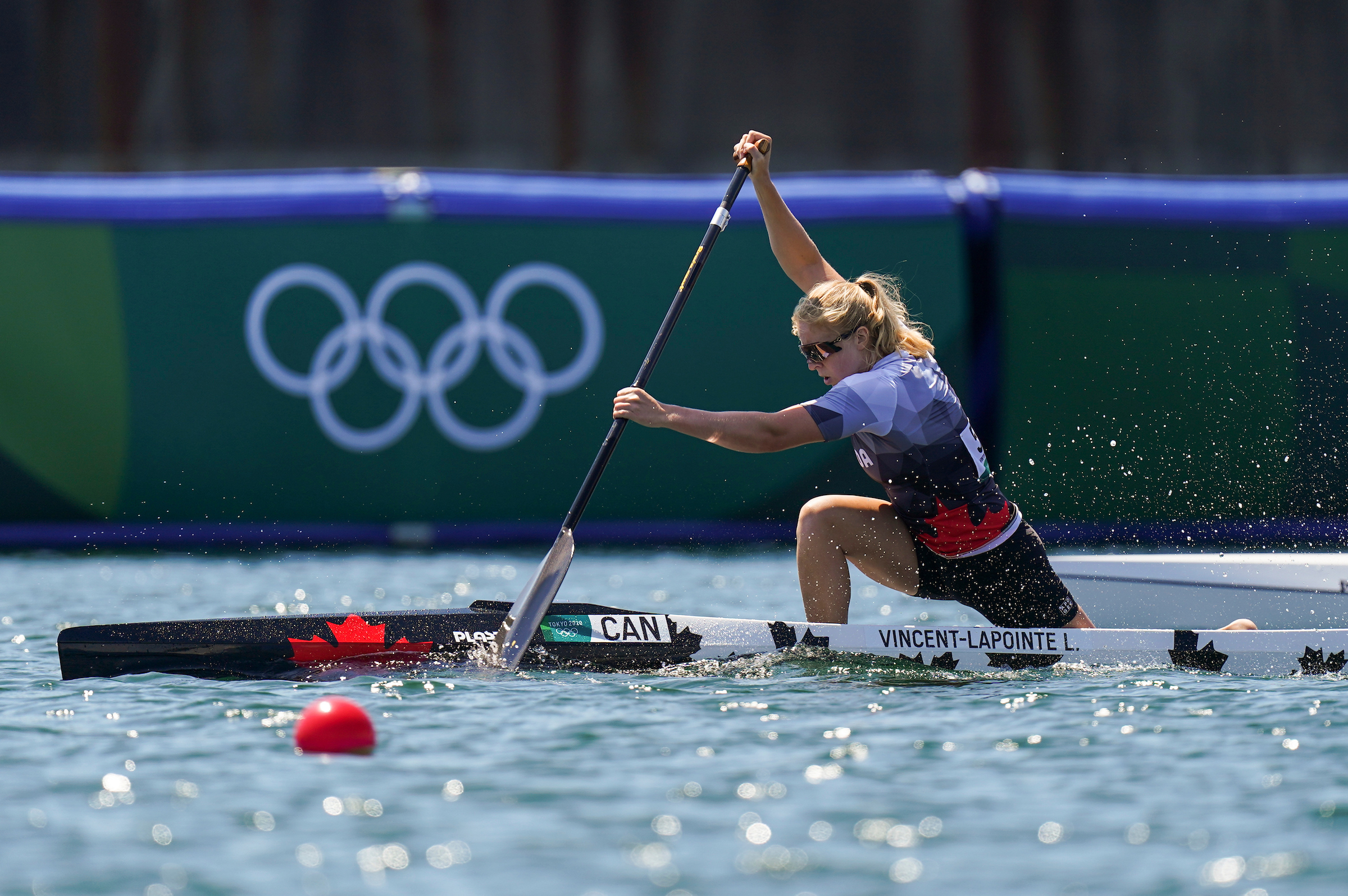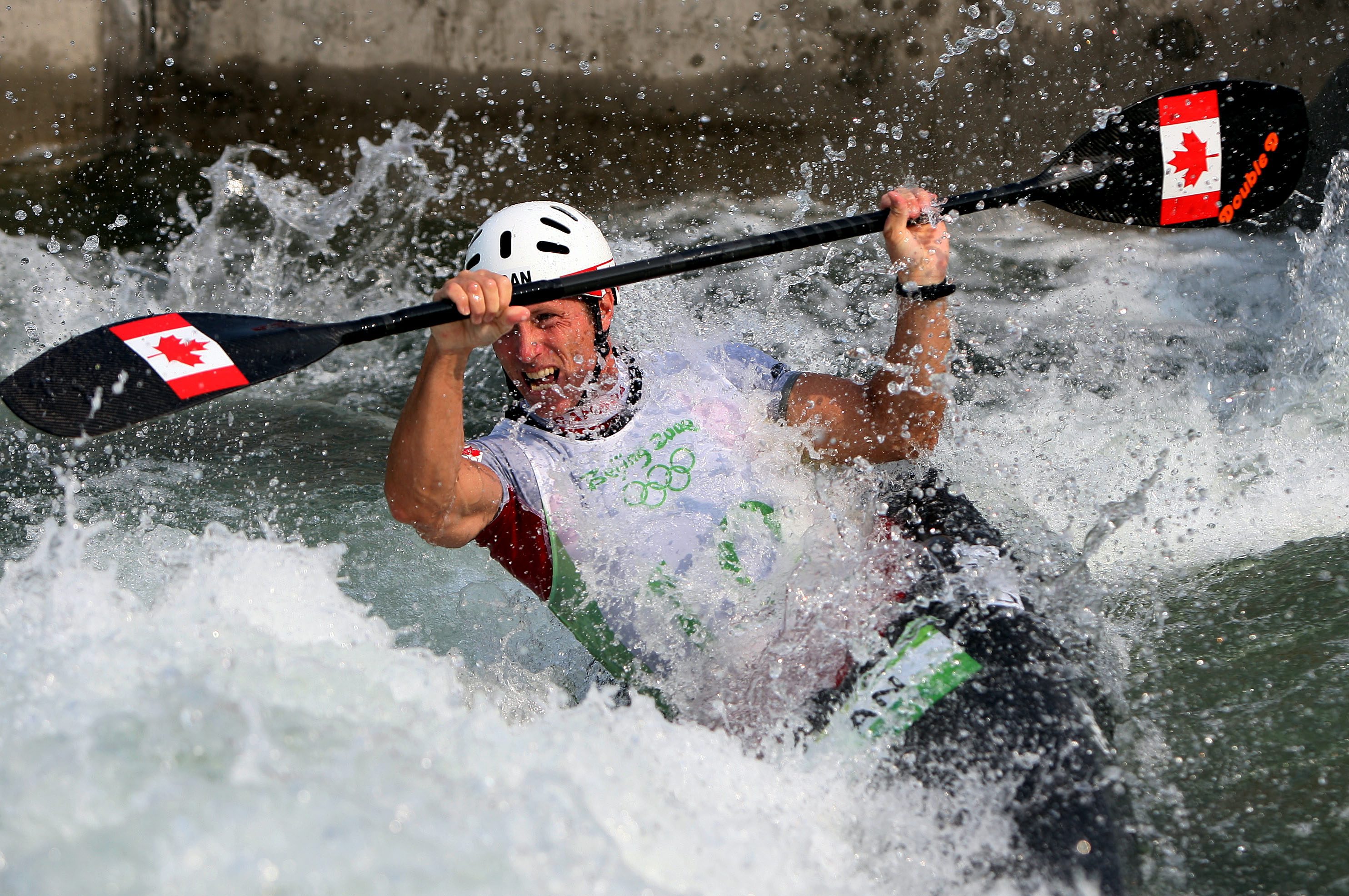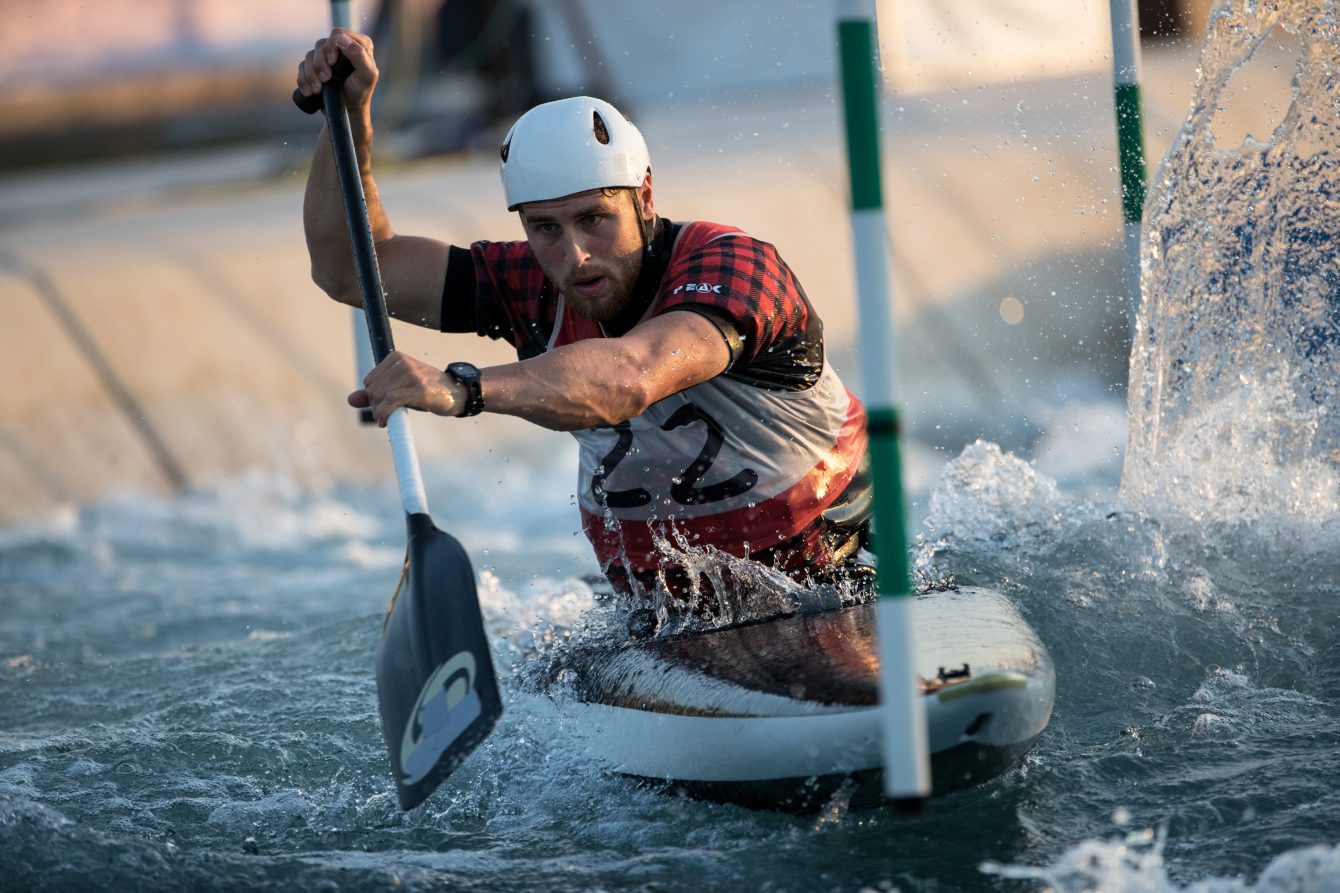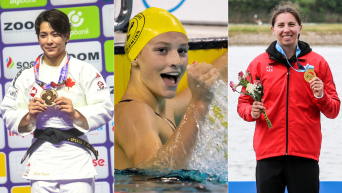What are the differences between canoes and kayaks, sprint vs slalom events?
From the paddles to the boats to the water flow on courses, there are more than a few differences between the disciplines of canoe/kayak sprint and canoe/kayak slalom. Here’s a breakdown of what sets them apart, along with the answer to: what is kayak cross?
Olympic canoe/kayak history
Canoe/kayak sprint racing has a long history, dating all the way back to 1869. After being a demonstration sport at Paris 1924, the sport was added to the Olympic program for Berlin 1936 — but for men only. Women’s kayak events were added at London 1948 while women’s canoe events were not added until Tokyo 2020.
Canoe/kayak slalom originated in 1933 as a summer alternative to slalom skiing in Switzerland, but it didn’t become an Olympic sport until Munich 1972. It became a permanent fixture at the Olympic Games 20 years later at Barcelona 1992. For a long time, the Olympic program included three men’s events (one kayak, two canoe) but just one women’s kayak event. The sport finally became gender equal at Tokyo 2020 with men and women both taking part in individual canoe and kayak events.
Canada has won 26 Olympic medals in canoe/kayak sprint. That includes podiums from the sport’s debut at Berlin 1936 all the way through the first women’s canoe events at Tokyo 2020. The country is still awaiting its first Olympic medal in canoe/kayak slalom.
What are the differences in canoes and kayaks?
You can spot whether an athlete is competing in a canoe or kayak event by the way they are positioned in their boat and the equipment they are using.
Let’s start with sprint. In canoe sprint events, athletes assume a kneeling position on one leg and place their other foot forward in an open stance. They use a single-bladed paddle to propel and steer their boat through the water. In kayak sprint events, athletes use a double-bladed paddle while sitting in the boat, which they steer with a small rudder. All boats used in sprint competitions must meet international standards governing length and minimum weight.
In canoe slalom events, competitors use a single-bladed paddle and kneel in the boat with both legs tucked under their body. Competitors in kayak events use a double-bladed paddle and are seated in their boats. Unlike in sprint, slalom boats do not have rudders and are steered by the athlete paddling and shifting their weight as needed. Because of the nature of slalom courses, paddlers are enclosed by a water-tight skirt. Slalom paddlers must also wear a helmet while competing.
What are the differences in sprint and slalom events?
Canoe/kayak sprint is all about speed. Taking place on a flatwater course, boats line up in eight separate lanes and are often held by a starting gate system that drops below the water when the race begins. Races vary in length from short distances (200m) to medium distances (500m) to longer distances (1000m). In sprint events, boats can feature one, two, or four paddlers.
When approaching the finish line, paddlers often throw their weight backwards in an attempt to get the nose of the boat across the line before their competitors. In a typical sprint competition, preliminary heats are held first. Depending on the number of entries, there may be quarterfinals prior to the semifinals and finals. The fastest boats are placed in the middle lanes.
Canoe/kayak slalom takes place on a whitewater course where athletes navigate through a series of upstream and downstream gates. Compared to sprint, slalom is more of a tactical sport than just being about pure speed.
The key to slalom is to get through the gates as quickly and as smoothly as possible. Touching a gate with the boat or body will result in a two-second penalty while missing a gate will result in a penalty of 50 seconds. An athlete’s entire head must pass through the gate in order to be counted.
Courses are between 150 and 400 metres in length and generally take 90 to 110 seconds to complete. All events at the Olympic Games feature one paddler per boat, but there are two-person races held at other international competitions.
In a typical slalom competition, a two-run qualifying heat is held. A paddler’s best time is used to determine who advances to the semifinals and from there, the finals. The semifinals and finals are both a single run.
What is kayak cross?
Kayak cross, formerly called extreme slalom, will be new to the Olympic program at Paris 2024. Falling under the slalom umbrella, races begin with four individual paddlers in identical plastic creek boats sliding off a ramp above the water and hitting the course at the same time.
Like other slalom races, paddlers must make their way through upstream and downstream gates. One major difference is a 360-degree kayak roll that each paddler must perform in a specific area of the course. Incidental contact is permitted between boats. The first two finishers in each heat move on to the next round until four remain to race in the final.
What canoe/kayak events are held at the Olympic Games?
All canoe/kayak events have alphanumeric designations that indicate the type of boat and the number of paddlers in each boat. C is for canoe while K is for kayak. All kayak cross events start with X.
Sprint kayak events at the Olympic Games include the men’s K-1 1000m, K-2 500m and K-4 500m along with the women’s K-1 500m, K-2 500m and K-4 500m. The canoe events are the men’s C-1 1000m and C-2 500m as well as the women’s C-1 200m and C-2 500m.
A number of variations have been made to sprint events over the years in regards to race length and boat capacity. For example, Olympic Games held between 1936 and 1956 included races over a distance of 10,000m.
For slalom, men and women both take part in three events: K-1, C-1, and X-1.



